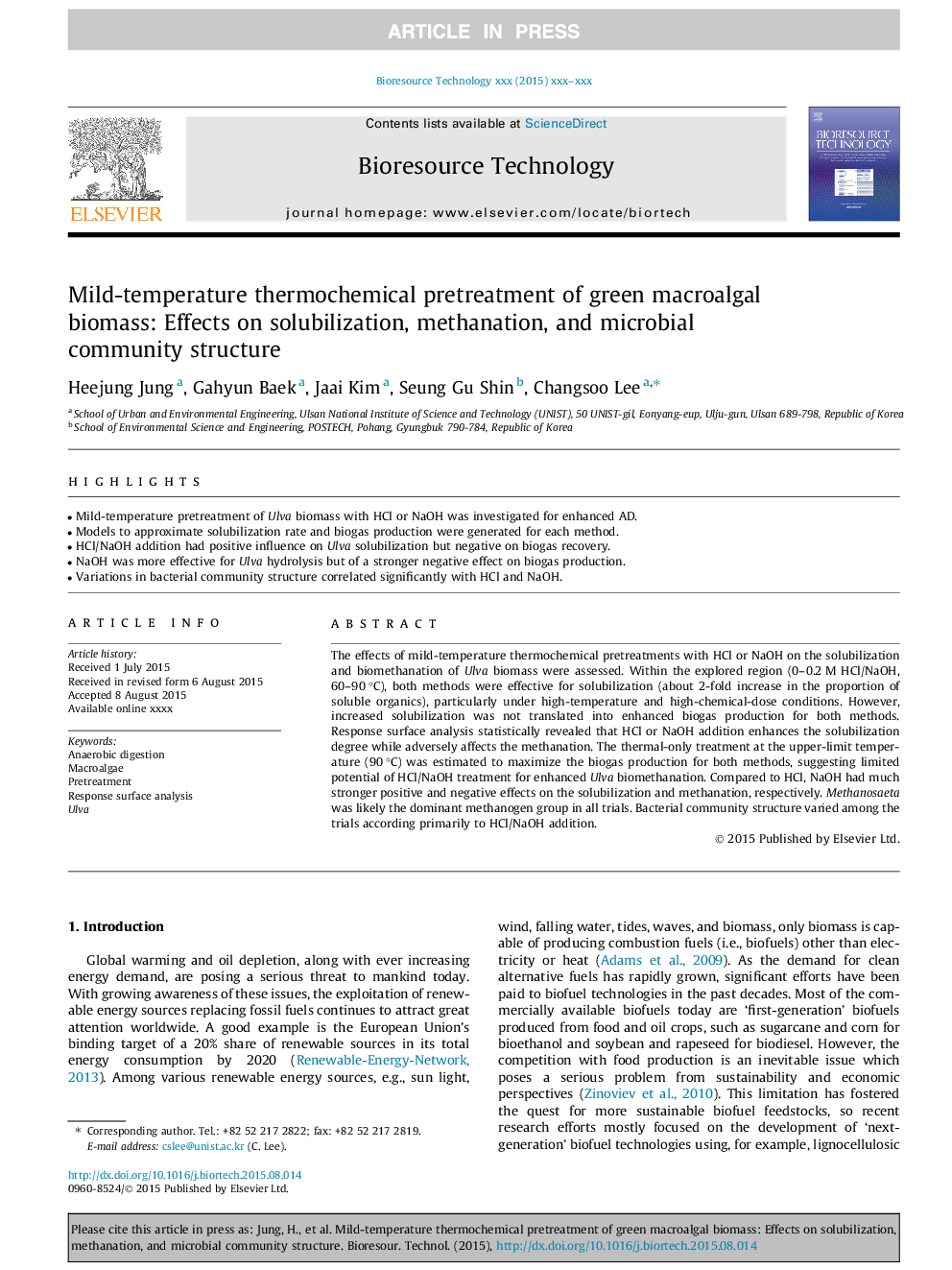| Article ID | Journal | Published Year | Pages | File Type |
|---|---|---|---|---|
| 7073164 | Bioresource Technology | 2016 | 10 Pages |
Abstract
The effects of mild-temperature thermochemical pretreatments with HCl or NaOH on the solubilization and biomethanation of Ulva biomass were assessed. Within the explored region (0-0.2 M HCl/NaOH, 60-90 °C), both methods were effective for solubilization (about 2-fold increase in the proportion of soluble organics), particularly under high-temperature and high-chemical-dose conditions. However, increased solubilization was not translated into enhanced biogas production for both methods. Response surface analysis statistically revealed that HCl or NaOH addition enhances the solubilization degree while adversely affects the methanation. The thermal-only treatment at the upper-limit temperature (90 °C) was estimated to maximize the biogas production for both methods, suggesting limited potential of HCl/NaOH treatment for enhanced Ulva biomethanation. Compared to HCl, NaOH had much stronger positive and negative effects on the solubilization and methanation, respectively. Methanosaeta was likely the dominant methanogen group in all trials. Bacterial community structure varied among the trials according primarily to HCl/NaOH addition.
Related Topics
Physical Sciences and Engineering
Chemical Engineering
Process Chemistry and Technology
Authors
Heejung Jung, Gahyun Baek, Jaai Kim, Seung Gu Shin, Changsoo Lee,
